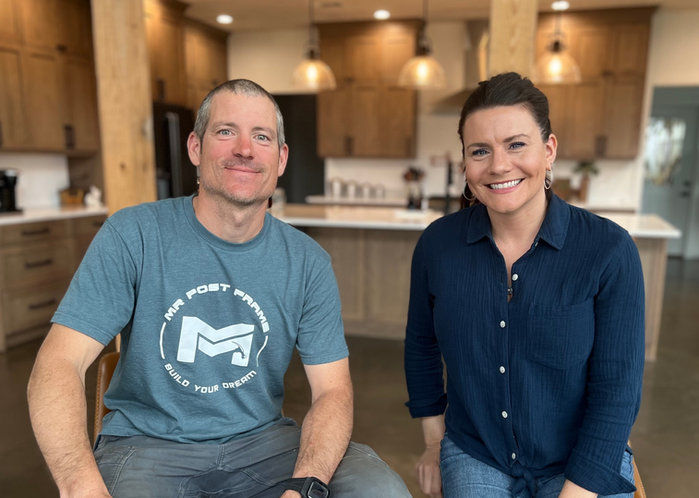Building a Shouse | Installing a Metal Roof | Part 7
- MR Post Frame

- Nov 17, 2023
- 2 min read
Updated: Dec 19, 2023

In part seven of this shouse build, We'll be discussing how we installed this steel. First, let's talk about 'The Carriage.' I'll show you the carriage I built for handling these 33 feet and three-inch long steel sheets. They are quite heavy, so it was important to design a reliable carriage. We typically construct these carriages on-site to avoid the hassle of transporting them. While it might be convenient to have an aluminum carriage that extends, I'll walk you through how you can easily just build one that works well for handling hefty sheets.
I used laminated two-by-fours to construct the carriage, and we have four sets of these. The overall width of the carriage is 40 inches, and each sheet extends out by six and a half feet on either side. We've added two-by-fours on the sides to secure the steel sheets. On the ends, away from the structure, I attach a two-by-four to prevent any lateral movement. This design not only supported the steel but also served as a handy camera holder.

Dealing with such large sheets was challenging, but we managed to complete the job in just two days with only two people. In total, we covered 84 feet of roof with these 33 feet, three-inch sheets. It was hard work, but the end result was worth it.
Now, let's talk about some important details and tips for this roofing project. We're installing these 33-foot and three-inch long metal sheets on a 60 by 80 structure. First, we attach the drip edge, and then we proceed with the soffit and fascia. You can do this step first or later; it depends on your preference. In our case, we are doing it after the initial installation.

To ensure a precise installation, we maintain a one-inch overhang and use a square to check for squareness against the fascia board. We've also straightened our fascia, which has made the process smoother. When sliding a sheet onto the roof, we secure it, making sure it aligns with predetermined measurements for fastening. It's worth noting that with exposed fasteners, the location of purlins becomes visible, especially on flat roofs like this. However, this is common with ribbed steel roofs, and it's not something to be overly concerned about.
The final step is to take care of sealing at the edges to prevent wind-driven rain from getting into the soffits. It's a small detail but adds to the quality of the installation. At the top, we'll use a roll of vented seal.We hope you found this post helpful, especially if you're planning to tackle a roofing project yourself. The installation turned out well, and our sheets lined up perfectly.
Thank you,
MR Post Frame

Patreon Group:
Interested in tackling your build on your own? If you want to explore the possibility of being your GC or self-building, our Patreon membership is for you! It's a community of like-minded people offering support, discounts, Q/A, and more.







Comments